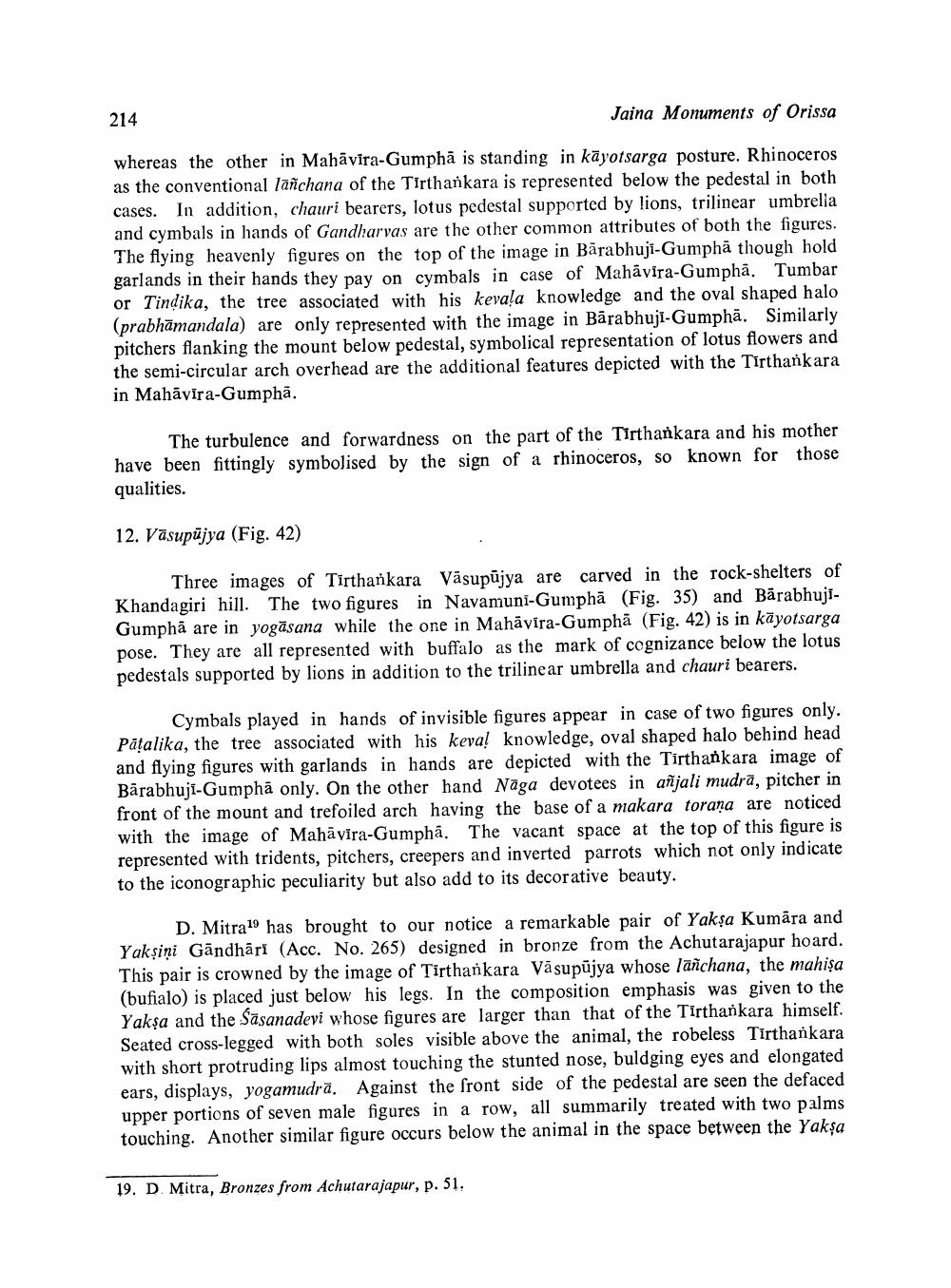________________
214
Jaina Monuments of Orissa whereas the other in Mahavira-Gumphå is standing in kayotsarga posture. Rhinoceros as the conventional lañichana of the Tirthankara is represented below the pedestal in both In addition, chauri bearers, lotus pedestal supported by lions, trilinear umbrella and cymbals in hands of Gandharvas are the other common attributes of both the figures. The flying heavenly figures on the top of the image in Bärabhuji-Gumpha though hold garlands in their hands they pay on cymbals in case of Mahavira-Gumpha. Tumbar or Tindika, the tree associated with his kevala knowledge and the oval shaped halo (prabhamandala) are only represented with the image in Bärabhuji-Gumphä. Similarly pitchers flanking the mount below pedestal, symbolical representation of lotus flowers and the semi-circular arch overhead are the additional features depicted with the Tirthankara in Mahavira-Gumpha.
The turbulence and forwardness on the part of the Tirthankara and his mother have been fittingly symbolised by the sign of a rhinoceros, so known for those. qualities.
12. Vasupujya (Fig. 42)
Three images of Tirthankara Väsupujya are carved in the rock-shelters of Khandagiri hill. The two figures in Navamunt-Gumphã (Fig. 35) and BärabhujiGumphâ are in yogasana while the one in Mahavira-Gumphã (Fig. 42) is in kayotsarga pose. They are all represented with buffalo as the mark of cognizance below the lotus pedestals supported by lions in addition to the trilinear umbrella and chaurt bearers.
Cymbals played in hands of invisible figures appear in case of two figures only. Patalika, the tree associated with his keval knowledge, oval shaped halo behind head and flying figures with garlands in hands are depicted with the Tirthankara image of Bārabhuji-Gumphã only. On the other hand Naga devotees in ajali mudra, pitcher in front of the mount and trefoiled arch having the base of a makara torana are noticed with the image of Mahavira-Gumphã. The vacant space at the top of this figure is represented with tridents, pitchers, creepers and inverted parrots which not only indicate to the iconographic peculiarity but also add to its decorative beauty.
D. Mitra1 has brought to our notice a remarkable pair of Yakṣa Kumāra and Yakşini Gandhari (Acc. No. 265) designed in bronze from the Achutarajapur hoard. This pair is crowned by the image of Tirthankara Vasupujya whose lanchana, the mahisa (bufialo) is placed just below his legs. In the composition emphasis was given to the Yaksa and the Sasanadevi whose figures are larger than that of the Tirthankara himself. Seated cross-legged with both soles visible above the animal, the robeless Tirthankara with short protruding lips almost touching the stunted nose, buldging eyes and elongated cars, displays, yogamudra. Against the front side of the pedestal are seen the defaced upper portions of seven male figures in a row, all summarily treated with two palms touching. Another similar figure occurs below the animal in the space between the Yakşa
19. D. Mitra, Bronzes from Achutarajapur, p. 51.




